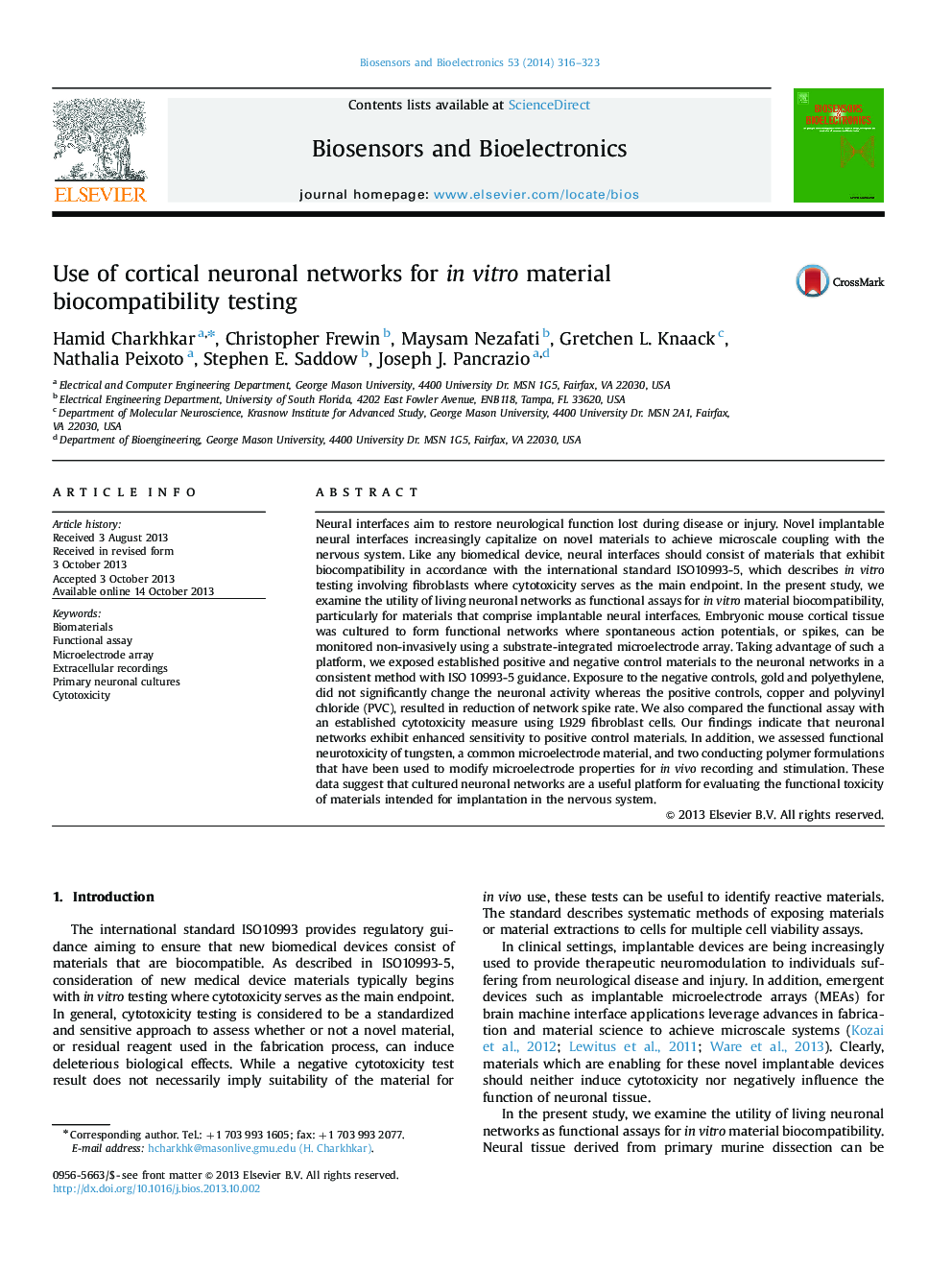| Article ID | Journal | Published Year | Pages | File Type |
|---|---|---|---|---|
| 866707 | Biosensors and Bioelectronics | 2014 | 8 Pages |
•Neuronal networks on MEAs were utilized for in vitro material biocompatibility testing.•Our findings for established positive and negative controls were supported and verified by live/dead assay.•The functional assay provides a relevant and sensitive measure to biomaterial testing for neural applications.•The proposed assay might be regarded as a complementary or alternative method to the conventional cytotoxicity assays.
Neural interfaces aim to restore neurological function lost during disease or injury. Novel implantable neural interfaces increasingly capitalize on novel materials to achieve microscale coupling with the nervous system. Like any biomedical device, neural interfaces should consist of materials that exhibit biocompatibility in accordance with the international standard ISO10993-5, which describes in vitro testing involving fibroblasts where cytotoxicity serves as the main endpoint. In the present study, we examine the utility of living neuronal networks as functional assays for in vitro material biocompatibility, particularly for materials that comprise implantable neural interfaces. Embryonic mouse cortical tissue was cultured to form functional networks where spontaneous action potentials, or spikes, can be monitored non-invasively using a substrate-integrated microelectrode array. Taking advantage of such a platform, we exposed established positive and negative control materials to the neuronal networks in a consistent method with ISO 10993-5 guidance. Exposure to the negative controls, gold and polyethylene, did not significantly change the neuronal activity whereas the positive controls, copper and polyvinyl chloride (PVC), resulted in reduction of network spike rate. We also compared the functional assay with an established cytotoxicity measure using L929 fibroblast cells. Our findings indicate that neuronal networks exhibit enhanced sensitivity to positive control materials. In addition, we assessed functional neurotoxicity of tungsten, a common microelectrode material, and two conducting polymer formulations that have been used to modify microelectrode properties for in vivo recording and stimulation. These data suggest that cultured neuronal networks are a useful platform for evaluating the functional toxicity of materials intended for implantation in the nervous system.
